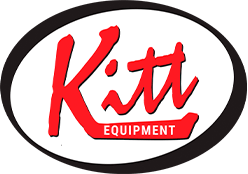Kitt Equipment Trailer Sales: Towing a Trailer for the First Time: A Beginner’s Guide
Towing a Trailer for the First Time: A Beginner’s Guide
Introduction
Towing a trailer for the first time can be a daunting experience, but with the right knowledge and preparation, it can be a safe and successful endeavor. Whether you’re planning to tow a dump, equipment, utility, boat, or cargo trailer, this guide will walk you through the essential steps to ensure a smooth towing experience. Let’s dive into the world of trailer towing for beginners.
1. Check Your Vehicle’s Towing Capacity
Before you even consider hitching up a trailer, it’s crucial to know your vehicle’s towing capacity. This information can typically be found in your vehicle’s owner’s manual or by consulting the manufacturer’s website. Exceeding your vehicle’s towing capacity can lead to dangerous situations, including damage to your vehicle, reduced control, and even accidents. Always stay within the recommended limits.
2. Select the Right Trailer
Choosing the correct trailer is essential for a successful towing experience. Different trailers are designed for specific purposes, so be sure to select one that matches your needs. Consider the trailer’s weight, size, and type, such as enclosed cargo trailers, utility trailers, or equipment trailers.
3. Install the Hitch and Coupler
To tow a trailer, you’ll need a compatible hitch receiver on your vehicle. If your vehicle doesn’t have one, consult with a professional installer to ensure a safe and secure connection. Once you have the hitch receiver, ensure that the coupler on the trailer matches it. Make sure the coupler is in good condition and properly lubricated.
4. Attach Safety Chains
Safety chains are your last line of defense in case the trailer becomes detached from the hitch. Cross the chains under the trailer’s tongue to create a cradle shape. Ensure they’re securely attached to the vehicle on both sides and have enough slack to allow for turning but not dragging.
5. Connect the Electrical Wiring
Trailer lights and brakes are essential for safety and legal compliance. Connect the trailer’s electrical wiring to your vehicle’s harness. Test all lights (brake lights, turn signals, and running lights) to ensure they are functioning correctly.
6. Perform a Pre-Trip Inspection
Before hitting the road, conduct a thorough pre-trip inspection. Check the tire pressure on both the vehicle and the trailer, ensuring they are within the recommended range. Inspect the trailer’s brakes, suspension, and any other mechanical components for signs of wear or damage. Make sure all cargo is secure and evenly distributed.
7. Practice Safe Driving Habits
When you’re towing a trailer, your driving style should adapt to the added weight and length. Remember the following tips:
• Increase your following distance to allow for longer braking distances.
• Use your side mirrors to monitor traffic and ensure the trailer stays in your lane.
• Slow down when cornering, and avoid sudden maneuvers.
• Be cautious when changing lanes and merging onto highways.
• Plan your stops and parking in advance, as parking spaces may be limited.
8. Brake and Accelerate Gradually
Towing a trailer significantly increases your vehicle’s weight, so braking and accelerating gradually is crucial. Avoid slamming on the brakes, as this can lead to skidding or jackknifing. Instead, apply steady and gentle pressure to the brake pedal.
9. Be Mindful of Sway
Trailer sway can occur when driving at high speeds, in strong crosswinds, or when passing large vehicles. To control sway, ease off the accelerator, and let the vehicle and trailer straighten. If sway persists, apply the trailer’s brakes independently to help regain control. **Trailer sway can also occur with improper load placement meaning to much weight at the rear of the trailer with little to no tongued weight. This will cause trailers at higher speeds to fishtail drastically. Watch Video
10. Practice Backing Up
Backing up with a trailer can be challenging for beginners. Find an empty parking lot or open space to practice. Remember that when backing up, turning the steering wheel in the opposite direction of where you want the trailer to go can be counterintuitive but effective.
Conclusion
Towing a trailer for the first time may seem daunting, but with careful preparation and practice, it can become a manageable and safe task. Always respect your vehicle’s towing capacity, choose the right trailer, and follow proper safety procedures. With time and experience, you’ll become a confident and skilled trailer operator, ready for any adventure on the road.
